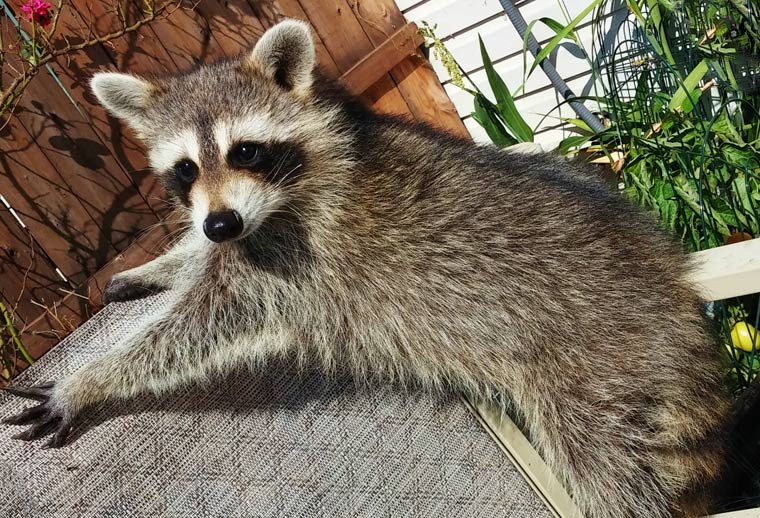-
info@aaanimalcontrol.com
Call us for help in your town
Humane Wildlife Education
Tips to keep wild animals from my garbage
Need wildlife removal in your hometown? We service over 500 USA locations! Click here to hire us in your town and check prices - updated for year 2020.
The trick to keeping wild animals out of your garbage can, is to make it as difficult as possible to get to. You have the obvious solutions, of course. Things like move the garbage can inside, to an outbuilding or garage if you have one available. If you don't, there are still things that you can do to make it wild animal proof. Does it have a lid? That's one of the easiest adjustments you could make, and you will also want to consider buying a metal one, if you don't have a metal one already. The large, plastic garbage cans are easily nibbled through, particularly by an animal such as a rat.

If you already have a metal trash can, and it had a lid, but the animals keep knocking the lid off, you should look at securing the lid down. Something as simple as a bungee cord could be used for this, wrapped around multiple times. Rats CAN still chew through this, but the multiple wraps and strong material will make it tougher for them. This will give you more time to notice the damage, and replace the cord if necessary.
One way that you could prevent wild animals from getting into your garbage cans, is to make sure the area AROUND your garbage can is as unattractive as possible. This means removing all the features an animal would look for. Piles of garbage and debris, for example, make the perfect home for a number of wild animals. If there is a potential home to investigate, they'll come closer. If they come closer, they'll find the garbage can. If they find the garbage can, they'll try to get inside. If they do, they'll get to the food. This will keep them coming back more too, time and time again, as well as signaling to other wild critters that they should come and take a closer look also.
Other sources of food may be lying around your yard or garden without you even realizing it too, and these will encourage the creatures to not only come closer, but also stick around. If you don't clean your BBQ up after you had that Saturday night party, the remnants will be a big neon sign, inviting wild animals to have a closer look. Cat and dog food that has been left on porch steps will invite these animals closer, and so will bird feeders, if they are not positioned in such a way that raccoons, squirrels, and other furry little devils cant get to them.
You could look at using deterrents and repellents to help rid you of your wild animal problem, but there's a good chance whatever you use won't work. You could try your hand at wildlife eviction fluid, which is often made of the urine of predatory animals. Urine of a male fox, for example, can act as a warning to female opossums, raccoons, and squirrels, as well as various other animals, and this could work at encouraging them to take their babies and leave. Male foxes will think nothing of snapping up a baby raccoon or possum for a tasty meal, and the female mothers know this.
Out of all the repellents and deterrents you could use, however, that is likely to be the one you have the most success with. Pieces of rope are often used to try and ward off snakes, mostly because of the rough feeling they get when they rub against it, but this has been shown to be more ineffective than effective. The same could be said for light and noise machines, two further expensive gadgets designed to keep these critters away. You'll more than likely find that these are a waste of your cash. These wild critters are very well adapted to living alongside humans, and that means dealing with all the loud noises and bright lights that come with them. If noises and bright lights worked, our homes wouldn't attract them at all. In fact, our homes do quite the opposite.
The more you make your home look unattractive to these creatures, the more of a chance that you'll manage to keep them at bay. Animals look for shelter, food, and a clean, fresh source of running water. If you are providing all of these things, there's no wonder these animals are coming in for a closer inspection. You're making it too easy for them!
For more information, you may want to click on one of these guides that I wrote:
How To Guide: Who should I hire? - What questions to ask, to look for, who NOT to hire.
How To Guide: do it yourself! - Advice on saving money by doing wildlife removal yourself.
Guide: How much does wildlife removal cost? - Analysis of wildlife control prices.
animals in the attic
noises in the attic


















